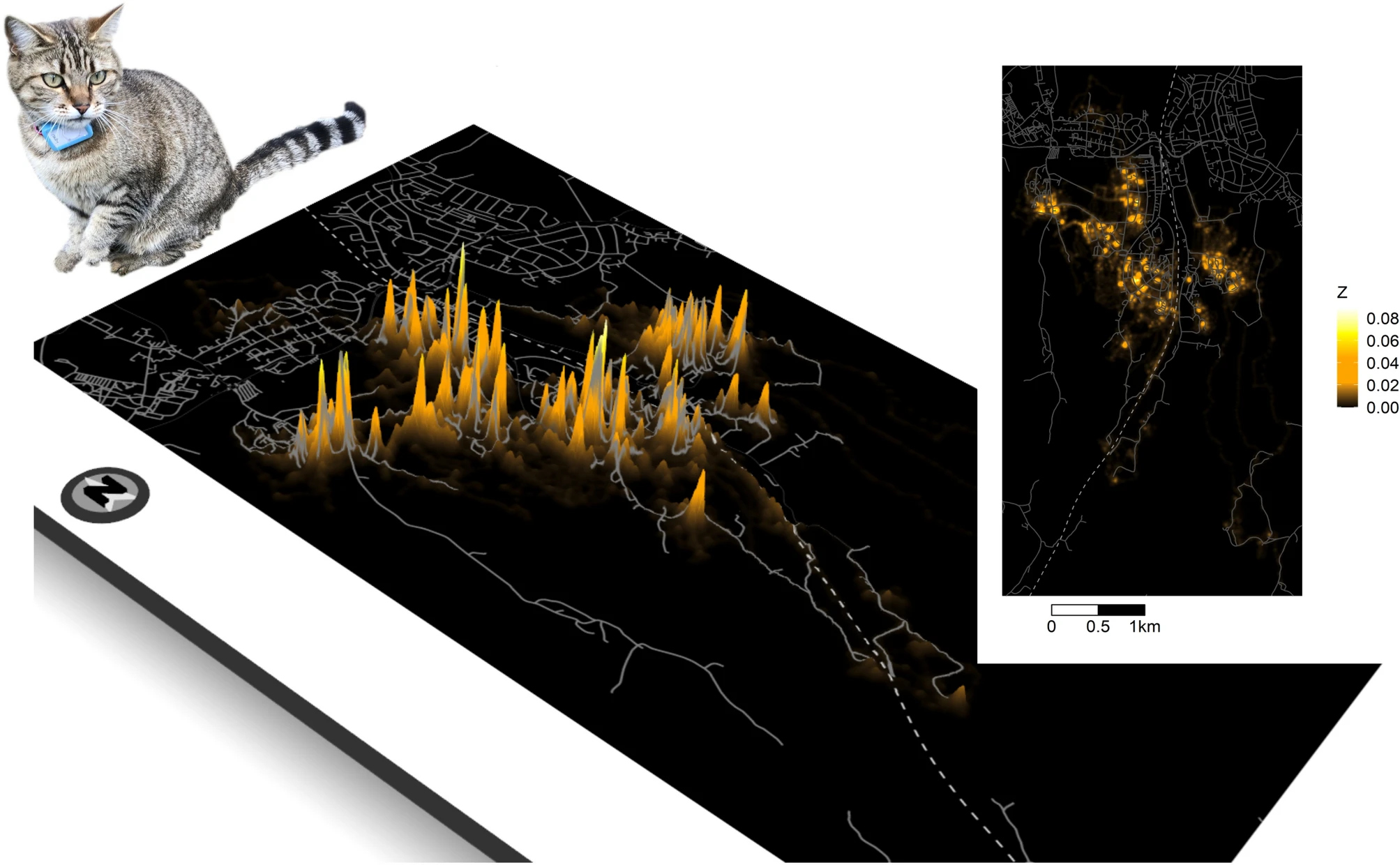Science posters are often riddled with complex charts and jargon. But Andreas Dahl had a different approach. He unveiled a poster that’s instantly interesting: a detailed map of his cat’s territory and its daily antics!
Purr-fectly fascinating
Dahl is a PhD student in a research group called NORMENT — Norwegian Centre for Mental Disorders Research. His work is not normally on cats but on brain development in adolescents. In fact, he says, his supervisors will not be too happy if he spends all his time on cats.
“We are a quite large group (~ 200 people) so every year we go on a retreat somewhere and meet up for a few days. This retreat also includes a poster session. I had just presented my (usual) work in a couple of other seminars right before the retreat, for mostly the same people, so I figured they would be tired of hearing about it. That’s why I decided to do something slightly different,” the researcher explained in an email.
What’s pretty surprising about the poster is that it shows that Mogens, the cat, has a pretty small range, centered around the house. Also, Mogens’ seems to roam more in nicer weather and less during the cold — which makes sense, especially in Norway.
“It surprised us that his movement is independent of the day of the week. We (me and my girlfriend) don’t have a cat flap, so he’s usually able to go out more on the weekends as we are home and can let him in and out. But it turns out that even though he spends more time outside on the weekends, he also sleeps outside, so the total amount of movement is the same,” Dahl told ZME Science in an email.
This fits with previous research that looked at cat patterns in more detail. For instance, one study on 92 cats in Oslo showed that Mugens’ activity is pretty average. But this likely also depends on the cat’s environment, with urban cats roaming less than rural cats.

This is just a small study, but even small studies like this one can help us paint a better picture of our domestic cats’ activity.
“I was also genuinely curious about Mogens’ habits, as I don’t really know what he is up to all day,” Dahl added.
Plus, there’s another reason why it’s important to understand domestic cats: the risk they pose to wildlife.
Cats and predation
Domestic cats, when allowed to roam outdoors, pose a threat to local wildlife due to their natural hunting instincts. They frequently prey on birds, small mammals, reptiles, and insects, leading to population declines or even the extinction of some local species. The presence of cats can also disturb nesting birds and damage habitats. Moreover, they compete with native predators for food, affecting the local ecological balance. Additionally, diseases carried by domestic cats, like FIV and FeLV, can be transmitted to wild cat populations, jeopardizing their survival.
Free-ranging domestic cats have been are estimated to kill 1.3–4.0 billion birds and 6.3–22.3 billion mammals annually. It’s not entirely clear how a cat’s range is linked to the wildlife damage it does, but predation from domestic cats is a severe problem.
But there are things you can do, as Dahl emphasizes. The simplest thing to do is simply not let your cat roam. If that’s not an option, then you can add a bell that prevents the cat from being as successful at predation.
“A few of the e-mails I got were critical of me as outdoor cats often prey on birds. I would like to add that this is something we took seriously when we started to let him go outside. He has a brightly colored collar and a bell and hasn’t caught any birds as far as I know. We also keep him inside if there are nests with chicks close to where he lives (the dip in activity in May showed on the poster was one such episode).”
Mogens is a pretty peaceful and chill cat, but responsible pet ownership requires us to consider the broader implications of our pets’ behavior. While Dahl’s study primarily focused on understanding his cat’s movement patterns, it inadvertently shed light on the larger issue of domestic cats and their impact on wildlife.
Dahl’s charming approach to his science poster is not only entertaining and rewarding, but also raises awareness about an important issue. Millions of people have outdoor roaming cats and have very little idea what their beloved pet is doing. Whether it’s for the safety of nearby birds or for the welbeing of our furry friends, it’s important to make informed decisions.


